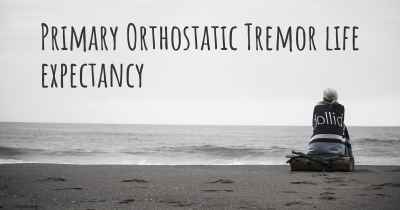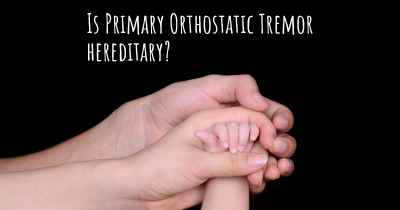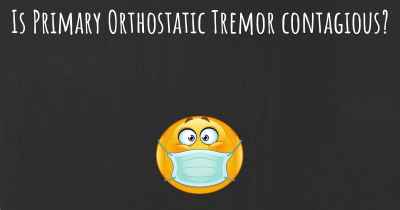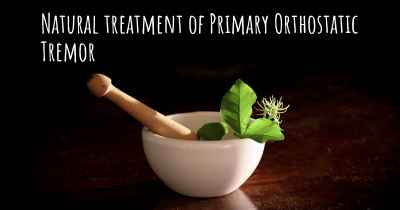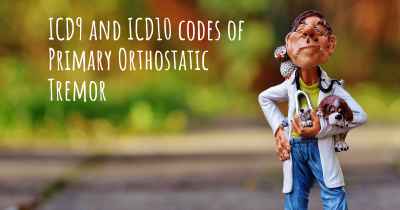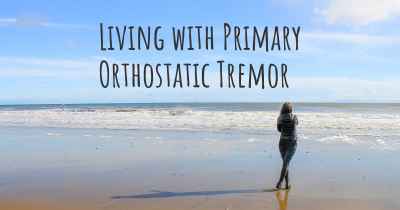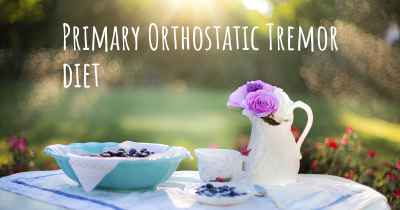Primary Orthostatic Tremor and depression
Can Primary Orthostatic Tremor cause depression? Could it affect your mood? Find out how Primary Orthostatic Tremor can affect your mood.
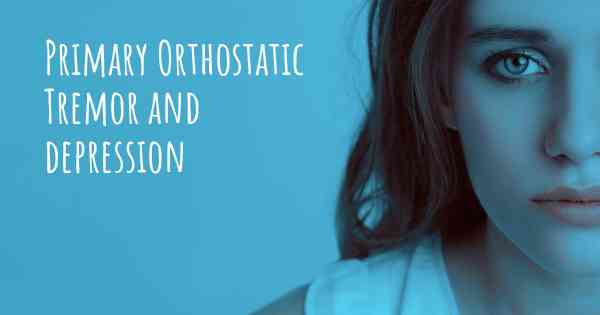
Primary Orthostatic Tremor (POT) is a rare neurological disorder characterized by a rapid tremor in the legs when standing. This condition is often misdiagnosed or overlooked due to its rarity and the difficulty in detecting the tremor. The tremor typically occurs when a person is standing still, and it disappears when they sit down or start walking. Although the exact cause of POT is unknown, it is believed to involve abnormal activity in the brain and spinal cord.
Living with POT can be challenging as the tremor can significantly impact a person's quality of life. The constant shaking can cause difficulties with balance and coordination, making it hard to perform daily activities such as walking, standing, or even holding objects. The tremor can also lead to feelings of embarrassment, frustration, and isolation, as it is often misunderstood by others who may mistake it for anxiety or nervousness.
Depression is a common comorbidity associated with POT. The chronic nature of the condition, coupled with the physical limitations and social implications, can contribute to the development of depressive symptoms. The constant tremor and the challenges it presents can lead to feelings of helplessness, hopelessness, and a loss of interest in previously enjoyed activities. It is essential to address both the physical and emotional aspects of POT to improve the overall well-being of individuals affected by this condition.
Managing POT and its associated depression requires a multidisciplinary approach. Medical interventions may include the use of medications such as beta-blockers or anticonvulsants to help reduce the tremor. Physical therapy and occupational therapy can also play a crucial role in improving balance, coordination, and overall functional abilities. Assistive devices, such as canes or walkers, may be recommended to enhance stability and mobility.
Psychological support is equally important in addressing the emotional impact of POT and depression. Cognitive-behavioral therapy (CBT) can help individuals develop coping strategies, challenge negative thoughts, and improve their overall mood. Support groups or counseling can provide a safe space for individuals to share their experiences, gain support from others facing similar challenges, and reduce feelings of isolation.
It is important for individuals with POT and depression to prioritize self-care and engage in activities that promote their well-being. Regular exercise, such as low-impact activities like swimming or tai chi, can help improve strength, balance, and overall mood. Stress-reduction techniques, such as mindfulness or deep breathing exercises, may also be beneficial in managing both the physical and emotional symptoms.
Family and social support are crucial in helping individuals with POT and depression navigate their daily lives. Understanding, empathy, and open communication within the family can foster a supportive environment. Educating friends, colleagues, and the wider community about POT can help reduce stigma and increase awareness.
In conclusion, Primary Orthostatic Tremor is a rare neurological disorder characterized by a rapid tremor in the legs when standing. It can significantly impact a person's quality of life and is often associated with depression. A comprehensive approach involving medical interventions, psychological support, self-care, and social support is essential in managing both the physical and emotional aspects of this condition.
